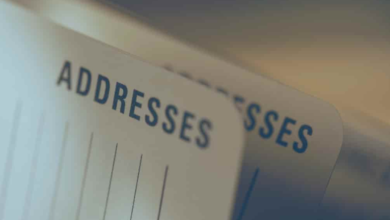The Role of Adverse Media Checks in AML Compliance Programs

In the world of compliance and financial crime prevention, one phrase you’ll hear more and more is “adverse media check.” But what does it mean? And more importantly, how does it support Anti-Money Laundering (AML) compliance programs?
Let’s break it down in plain English, without the jargon.
What is AML Compliance?
AML compliance stands for Anti-Money Laundering compliance, a set of policies, regulations, and procedures financial institutions follow to prevent criminals from disguising illegally obtained funds as legitimate income.
These programs are essential for:
- Detecting suspicious activities
- Preventing terrorist financing
- Maintaining the integrity of the financial system
See also: The Role of Professional Wasp Exterminators in Community Safety
What is an Adverse Media Check?
An adverse media checks (also known as negative news screening) is a process where businesses search for negative mentions of a person or entity in public sources—like news articles, blogs, sanctions lists, court records, and more.
It’s used to spot red flags before entering into a business relationship.
Think of it as Googling someone… but on steroids, using smarter tools and deeper databases.
Why Are Adverse Media Checks So Important in AML?
Adverse media checks aren’t just a “nice to have” anymore—they’re becoming a core requirement in AML programs around the world. Here’s why:
1. Early Detection of High-Risk Individuals or Entities
Sometimes, a person might not yet be on an official watchlist, but they’ve been linked to fraud, money laundering, corruption, or organized crime in the media. This check catches that early.
2. Going Beyond Traditional Checks
Standard background checks only scratch the surface. Adverse media digs deeper, often revealing things official documents miss.
3. Staying Compliant with Evolving Regulations
Governments and regulators increasingly expect firms to include ongoing media monitoring as part of their AML obligations. Failing to do so? That could cost millions in fines.
Key Benefits of Adverse Media Screening
Real-Time Risk Monitoring
New information surfaces daily. Modern adverse media tools track updates automatically, flagging risks as soon as they emerge.
Enhanced Due Diligence (EDD)
When onboarding high-risk clients, enhanced due diligence is a must. Adverse media gives compliance teams the context needed to evaluate risk effectively.
Better KYC Compliance
Know Your Customer (KYC) processes are enhanced by media checks, which help verify whether a customer’s background is clean or questionable.
How Do Adverse Media Checks Actually Work?
Where Does the Data Come From?
Sources include:
- News outlets
- Government records
- Regulatory bulletins
- Sanctions lists
- Social media platforms
Manual vs Automated Screening
Manual searches are time-consuming and often miss international or obscure coverage. Automated tools powered by AI can scan thousands of sources instantly in multiple languages.
Role of AI and NLP
AI and Natural Language Processing (NLP) now power most screening tools, helping to filter out false positives and highlight relevant risk-related content.
What Do Regulators Say?
Compliance teams can’t afford to ignore what the regulators are demanding.
FATF (Financial Action Task Force)
The FATF recommends integrating adverse media into customer due diligence processes.
🇺🇸 FinCEN (U.S.)
FinCEN suggests institutions conduct continuous screening of customers, including negative news reviews.
🇪🇺 EU AML Directives
The European Union’s AMLD5 and AMLD6 include risk-based monitoring and stress the importance of ongoing screening.
Challenges with Adverse Media Checks
Like anything in compliance, there are a few bumps along the road.
False Positives
If a person has a common name, you might pull up articles on the wrong person. Tools need to be smart enough to filter irrelevant noise.
Global Language and Coverage Gaps
What happens if negative news is only published in a foreign language? Good tools should support multi-lingual and international sources.
Data Privacy
Screening must still respect data protection laws like GDPR. Over-collection or misuse can lead to legal trouble.
Best Practices for Using Adverse Media in AML
Use a Risk-Based Approach
Don’t treat all customers the same. High-risk clients deserve more frequent and thorough screening.
Regular and Ongoing Monitoring
Adverse media isn’t a one-and-done deal. Continuous monitoring is the new standard.
Integrate with Existing AML Platforms
Combine adverse media tools with your transaction monitoring and KYC software for seamless compliance workflows.
Real-World Case Studies
Banking Sector
A global bank flagged a new client as low risk, but an adverse media scan revealed ties to a fraud ring. Onboarding was halted—preventing reputational damage and fines.
Cryptocurrency Exchange
A crypto platform used automated screening to identify customers tied to darknet activities—well before law enforcement did.
Real Estate Firm
A high-net-worth buyer passed KYC checks, but media revealed lawsuits tied to money laundering. The deal was called off, saving the firm millions in potential fines.
Looking Ahead: The Future of Adverse Media in AML
Predictive Risk Scoring
Some tools now use AI to predict future risk, not just flag current issues.
Global Real-Time Monitoring
Expect to see real-time alerts for any negative news published across the world, in multiple languages.
Blockchain Integration
As blockchain compliance grows, adverse media tools may soon link with decentralized identities and smart contracts for risk alerts.
Conclusion
Adverse media checks are no longer optional. In today’s fast-moving regulatory environment, they are a fundamental component of AML compliance programs. They offer early warnings, catch what traditional checks miss, and keep businesses aligned with global standards. If your AML strategy doesn’t already include adverse media screening, you’re not just behind—you could be at serious risk.





